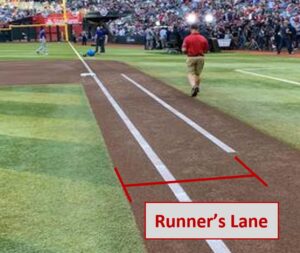Back in February, MLB commissioner Rob Manfred said that he wanted to be able to market a blackout-free streaming bundle including roughly half the league. That plan was largely tied to the collapse of Diamond Sports Group, though that company is now emerging from bankruptcy and will continue to operate for the time being. That seems to have kicked Manfred’s plans down the road a little bit, with Evan Drellich of The Athletic doing a deep dive this week on the current state of things.
Manfred still has his sights set on getting rid of local blackouts as part of TV/streaming packages, though it might now have to wait a few years. While some clubs that lost their broadcast deals are now letting MLB handle things, others have re-upped with Diamond. The Braves, Cardinals, Marlins, Angels, Tigers, and Rays are back with Diamond while the Royals might also join them, depending on the outcome of ongoing negotiations. But Drellich notes that none of those deals go beyond 2028.
That is significant because that is also the year that MLB’s national broadcast deals with Fox, ESPN* and Turner expire. (*As a side note, Drellich notes that MLB and ESPN have a mutual opt-out after this season but talks about that are ongoing.) The league’s hope is to have as much on the table as possible when negotiating new national deals. “Most important from my perspective is that all the deals for the Diamond clubs end no later than 2028,” Manfred says in the piece. “My interest in local rights in large part is to have them available when we do national renewals.”
The bidding could include more than those three companies that MLB currently has national deals with, as Drellich notes that executives from Apple, Amazon, CBS, Disney/ESPN, DirecTV, Fox, Netflix, NBC/Peacock, Roku, YouTube and Warner Bros.-Discovery were present at the World Series. MLB already has a deal with Roku for Sunday games, a slot previously held by Peacock. Apple has Friday Night Baseball while the Diamond clubs will be available on Amazon Prime next year. YouTube had a previous deal with MLB that ran from 2019 to 2022.
The regional sports network (RSN) model has been a huge source of revenue for all teams in the past but cord cutting has chipped away at that model. The Padres, Diamondbacks and Rockies all operated without an RSN partner in 2024, with the league handling their broadcasts both for TV/cable/satellite and direct-to-consumer streaming. The Twins, Guardians, Brewers and Reds will go down that path in 2025.
Simplistically, this is bad for teams but good for fans. The clubs are losing that passive revenue, as many people previously signed up for cable/satellite bundles that included sports RSNs even if they weren’t much interested in baseball. The streaming model cuts out the middleman but requires more active uptake from fans and leads to lower revenues, at least in the short term. But for fans, this allows them to finally get around the blackouts that have been an annoying part of the RSN paradigm for decades.
Though the revenue streams aren’t as strong, the league seems to recognize that this is the way of the future and is trying to lean into it. Though as detailed by Drellich, actually following through will be complicated.
“I’d like to have all the rights available,” Manfred said. “I’d like to talk to the people who are buyers. I’d like to cut them up into packages and sell them, as many of them as possible, nationally, and then have a plan to deal with what’s left over.”
As mentioned, the league already has seven clubs on its ledger, though Drellich adds that it’s technically eight. The Mariners took control of ROOT Sports Northwest a year ago but Drellich relays that the league is involved to some degree as well. If the six or seven clubs with Diamond eventually link up with the league a few years down the line, that would be roughly half the league. The Rangers are sort of a wild card at present, as they don’t plan to continue their relationship with Diamond but haven’t yet outlined a plan for 2025, reportedly exploring the creation of their own RSN. Drellich says close to two thirds of the league could have their rights available by 2028, presumably due to other non-Diamond RSN deals expiring. Some clubs still have relationships with NBC affiliates or other broadcasters.
The issue in MLB getting the other clubs on board is that they are in very different financial positions. Broadly speaking, the larger-market clubs are in better shape, both because of stronger viewership bases and because the club and its broadcaster are often the same company. If all the clubs were cobbled together as part of some bundle which spread the profits around, that would benefit the smaller clubs while harming the larger ones.
That would naturally be unappealing to the larger clubs, though Drellich notes that a compromise could perhaps be reached by changing the overall revenue sharing. Currently, each clubs shares 48% of their local revenues (local media, ticket sales, concessions, merchandise and sponsorships). The Drellich piece suggests that greater sharing of broadcast money could be accompanied by less sharing of the other streams.
“I do think there are a combination of things that for even the very biggest teams,” Manfred says, “we can demonstrate that for the good of the game over the long haul, it’s better for everybody and better for them.”
Another complication is that the MLB Players Association would have to be involved. They don’t need to be consulted when it comes to broadcast decisions but all revenue-sharing plans need to be collectively bargained. The current collective bargaining agreement runs until December of 2026, so these matters will likely need to be hammered out in the next CBA, ahead of the aforementioned key pivot point in 2028.
“If the model changes, we will be involved in negotiating how those changes might affect the system and will ensure that the interests and priorities of the players are protected,” says Tony Clark, the head of the MLBPA. The relationship between the league and the union hasn’t been great lately, with the most recent CBA talks resulting in a lockout of more than three months that almost resulted in the 2022 season being canceled or shortened. A deal did get done and the season was spared, but some key issues went unaddressed and will likely come up again, such as an international draft. Then there’s the ever-present CBA issues like salaries, the competitive balance tax and so on.
Presumably, Manfred won’t want another work stoppage just ahead of his big pitch to potential broadcasters. Anything that hurts fan interest in the game would naturally make those rights less appealing, but the league’s motivation to get a deal done will obviously be contingent on how effectively they can negotiate all CBA issues with the players. The two sides agreed in July of this year to have CBT money redirected to those clubs who lost broadcast revenue, so perhaps some of this could be accomplished outside of full CBA talks.
There are many balls in the air here and a few years for them to bounce around, but Manfred will need to find a path forward that satisfies the owners as well as the players. If he succeeds, it could be good for growing the game by improving fan access to the product. An entrenchment of the current paradigm, on the other hand, could perhaps increase fan dissatisfaction with the inequalities that impact competitive balance.
How it all plays out will lead to ripple effects that impact the on-field product. The Padres and Twins have already scaled back their payrolls in response to the shifting landscape. This seemed to have an impact on last winter’s market, with several free agents settling for deals that fell well below initial projections. Clubs like the Cardinals and Rangers are also planning to dial things back next year.

